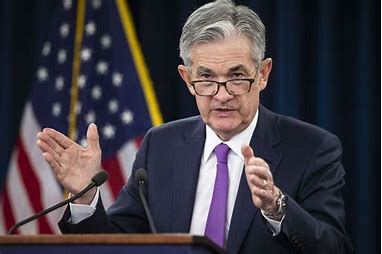If the Federal Reserve chooses not to lower interest rates in 2024, it would diverge from market expectations and potentially lead to various outcomes for equity investors. Initially, there might be disappointment among investors who have anticipated rate cuts, potentially resulting in short-term volatility in equity markets. However, if the Fed’s decision is perceived as a vote of confidence in the strength of the economy, markets may stabilize or even rally over time.
Different sectors of the economy may react differently to the Fed’s decision. Rate-sensitive sectors like real estate and utilities could face downside pressure if investors had expected rate cuts to boost these sectors. Conversely, sectors benefiting from a strong economy, such as technology and consumer discretionary, could perform well if the Fed’s decision is viewed positively for economic growth.
Furthermore, the Fed’s decision could impact inflation expectations. If the central bank opts to hold rates steady, it may signal confidence in the current level of inflation and suggest that inflation will moderate naturally over time. This could alleviate concerns about runaway inflation and bolster investor confidence.
Investors would closely monitor the Fed’s communications for insights into future policy direction. A decision not to lower rates despite market expectations could signal a shift in the central bank’s approach to monetary policy. Investors would seek clues about whether additional rate hikes may be on the horizon.
Ultimately, the Fed’s decision would reflect its assessment of the overall economic outlook. If the central bank believes that economic growth remains robust and inflationary pressures are manageable, it may choose to maintain its current policy stance to avoid overheating the economy.
Policymakers worldwide are grappling with the delicate balance of adjusting interest rates to navigate between the risks of inflation and recession. On one hand, cutting rates too soon could fuel inflationary pressures, necessitating even more aggressive tightening measures in the future. On the other hand, keeping rates high for too long could stifle economic growth and push the economy into a recession. Currently, the Federal Reserve is adopting a cautious approach, closely monitoring economic data before making any decisions.
There is a possibility that Fed officials may not become confident in the sustainability of inflation reaching the central bank’s target of 2% annually this year. In such a scenario, they might choose to keep rates unchanged for the remainder of the year. This cautious stance reflects a concern about the risk of the economy overheating, reminiscent of the late 1960s when preemptive rate cuts led to a resurgence in inflation.
Vanguard’s global chief economist, Joe Davis, has highlighted the potential risks of the Fed not achieving a soft landing for the economy, emphasizing parallels with historical events. Davis suggests that if the Fed aims to avoid raising interest rates in 2025, it might opt to refrain from rate cuts in 2024 as well.
Despite the uncertainty surrounding monetary policy, this scenario does not necessarily spell bad news for investors. Historical data analyzed by Bespoke Investment Group indicates that stock returns have typically been robust between the Fed’s last rate hike and the first rate cut of a cycle. This positive performance reflects strong economic growth and higher corporate earnings across various industries and companies. As a result, the stock market rally could broaden, driven by fundamental factors.
Although bond yields might rise in a scenario where the Fed holds rates steady throughout 2024, it does not necessarily imply a crash in the stock market. Instead, the focus would be on the underlying strength of the economy and the potential for continued growth and profitability, providing a supportive backdrop for equities.
